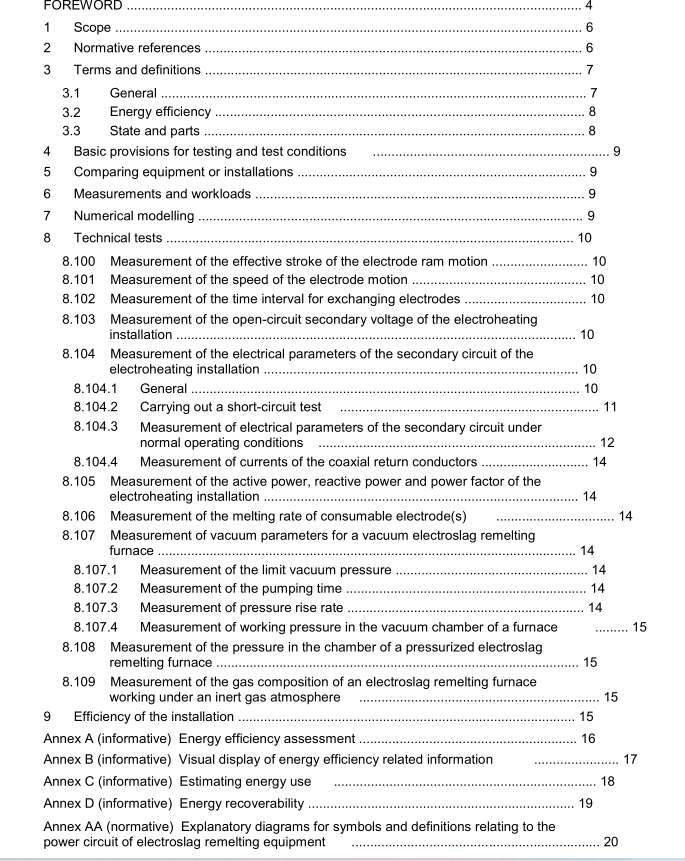IEC 60779 pdf – Installations for electroheating and electromagnetic processing – Test methods for electroslag remelting furnaces

IEC 60779 pdf – Installations for electroheating and electromagnetic processing – Test methods for electroslag remelting furnaces
8Technical tests
Clause 8 of lEC 60398;2015 is applicable except as follows.
Additions:
8.100Measurement of the effective stroke of the electrode ram motion
The effective stroke of the electrode ram motion is the distance between the upper limitedposition and the lower limited position of the electrode ram where the motion stops.
The measurement shall be made with a meter ruler when the main power of the furnace is off.
8.101 Measurement of the speed of the electrode motion
The measurement shall be made with manual control of the moving system of the electrode in
two directions under the condition that the furmace is equipped with the electrode(s) of thelargest weight and length allowed by the designer.
NOTE The measurement can be made by another method,for example,using electric signal control.
The measurement of the speed of motion shall be carried out by means of a stop-watch (orelectronic time-base control),noting the distance covered by the electrode arm relative to itsfixed support.
8.102 Measurement of the time interval for exchanging electrodes
The purpose of this test is to check if the time interval for exchanging electrodes meets therequirements agreed between the manufacturer and the user when the fumace is equipped with
two sets of electrode feed drive systems.
The time to be measured with a stop-watch is the time interval from the moment when thesecondary current becomes zero after the first electrode has melted and pulled out of the molten
slag to the moment when the next electrode is dipped into the slag pool and the secondarycurrent flows in the circuit.
8.103
Measurement of the open-circuit secondary voltage of the electroheatinginstallation
This test shall be carried out across the melting power supply terminals (see item 6in Figure AA.1).
lf the installation is provided with a regulation system,the minimum and the maximum open-circuit secondary voltages shall be measured.
8.104 Measurement of the electrical parameters of the secondary circuit of the
electroheating installation
8.104.1 General
The purpose of this test is to check if the characteristics of the secondary circuit of the furnacemeet the requirements agreed between the manufacturer and the user.
8.104.2Carrying out a short-circuit test
This test, which is not applicable for DC electroslag remelting furnace, shall be carried out under
the following conditions. The furnace shall be equipped with the electrode(s) of the largestweight and length allowed by the designer. The electrical and magnetic properties of theelectrode material shall be defined beforehand.The electrode(s) shall be brought into electrical
contact with the base plate. The possible test circuit is shown in Figure AA.1. A suitablealternative method may be used by mutual agreement between the manufacturer and the user.
The voltage supply shall be set at its minimum.
The voltage shall be increased progressively until the rated current of the furnace is achieved.
The tests are carried out at least twice.For every test, the following electrical parameters shallbe measured or calculated.
a) Active power P2 on the secondary side of the furnace transformer – measured with
wattmeters.
lf, in some cases, it is difficult to measure P2, the active power P1 shall be measured on theprimary side of the furnace transformer with wattmeters, and thenP2 calculated as:
P2 = P1 – PCuT (1)
b) 12,U2 on the secondary side of the furnace transformer – measured with ammeters and
voltmeters, respectively.
c)Calculation of the following secondary values:









